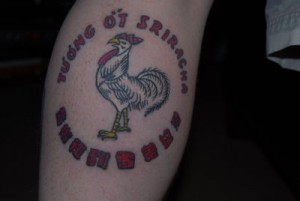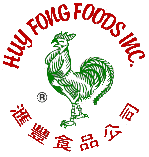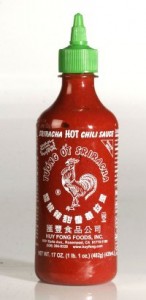The question, really is not what I use Sriracha with; it’s what I don’t use it with.
For instance, I have not begun putting Sriracha (a.k.a. The Rooster) in my coffee. Yet.
But over the past decade and change I’ve discovered that, with few exceptions, The Rooster augments the enjoyment of virtually anything you can put into your mouth. Pho, obviously, is the alpha and omega: this dish is simply unimaginable without Sriracha. With rice? Naturally. In pasta? Certainly. Potato quesadillas from Whole Foods? You bet your ass. What else? Name it. Hash browns on a hungover weekend morning? Fahgedaboudit. On hot dogs (avec mustard)? You know this. On sushi? Please. I don’t shake the Sriacha into my morning fruit smoothies, but that’s only because I’m not man enough.
People who get it are part of a (growing) secret society; it’s just understood. A simple raised eyebrow if you open up a friend’s refrigerator and see that cock strutting his stuff somewhere on the side-shelf. If it ever comes up in conversation, people don’t casually say “Oh, yeah, I use that sometimes”; it’s more like “The Rooster? Dude; that stuff is the shit!”
Suffice it to say, it has spawned a legion of fans, some of whom take it quite seriously indeed (For more food-inspired ink, check out the intriguing site overseen by the owner of the leg, below).

The sauce has its own Facebook page with 131,294 fans.
Today’s New York Times has an article celebrating this sauce and its origins here.
Some interesting details, including some less savory aspects, at least to American eyes. Here’s a taste:
From 1975 onward, Mr. Tran made sauces from peppers grown by his older brother on a farm just beyond Long Binh, a village north of what was then Saigon. The most popular was an oil-based sauce, perfumed by galangal, a pungent relative of ginger. (Mr. Tran intended it as a dip for beef plucked from bowls of pho, it was more popular as a sauce for roasted dog.)
Though he never devised a formal name for his products, Mr. Tran decorated each cap with a rooster, his astrological sign. Production was family focused. Mr. Tran ground the peppers. His father-in-law washed the sauce containers, reusing Gerber baby food jars obtained from American servicemen. His brother-in-law filled the jars with sauce. Itinerant jobbers bought the sauces from Mr. Tran, and sold them to shops and other informal restaurants.
Howlin’ Wolf:


